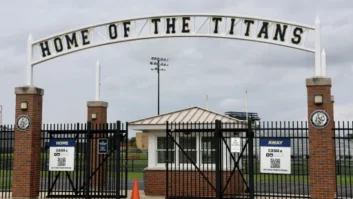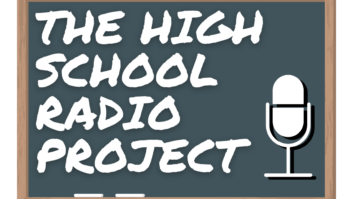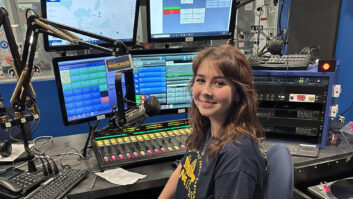Sewanee, Tenn. is known for its abundance of natural scenery and the University of the South, which, together, brings the local population up to a whopping 2,535 people, according to the 2020 census.
However, nestled between the college campus and the nature trails, just an hour west of Chattanooga, lies a longstanding private school that has strong ties to a well-known industry exec and is currently working to get more young people interested in broadcast professions.
In 1981, St. Andrew’s School (est. 1905) and Sewanee Academy (est. 1868) combined to create St. Andrew’s-Sewanee School. Today, SAS serves 240 students in grades 6–12 and boasts a small but successful student radio station, WMTN(LP).
This spring, the 0.003 kW station was completely outfitted with new tech. School officials told Radio World that nearly all the station equipment, software and hardware components had reached the functional end of their life, some having been used since WMTN first hit the airwaves in 2004.
But with a little — or a lot — of help from the community and school alumnus Bud Walters, those old digs are a thing of the past.
Walters is credited with founding the student station as well as subsequent funding. He is the owner and president of Cromwell Group, which is the licensee and operator of 31 stations across Tennessee, Kentucky and Illinois. Walters — who was recently named as one of the “Giants of Broadcasting & Electronic Arts” — is a 1959 graduate of Sewanee Military Academy, one of SAS’s parent schools, and is dubbed “the father of WMTN.”
To learn more about studio upgrades, student and staff involvement and station goals, we caught up with J.R. Ankney, SAS’s director of music & recording arts and program director, faculty sponsor and head of engineering for WMTN, 103.1, “The Mountain.”
Radio World: How many high school students are involved with the station?
J.R. Ankney: In the fall trimester, 12 [high school] students meet three times weekly after regular classes to create programming as well as broadcast live shows. Additionally, the school added a Radio Broadcasting and Production Class to its arts curriculum, and seven students were enrolled for its first semester.

RW: Tell me about Bud. How has his presence/support been felt over the years?
Ankney: Bud Walters made WMTN(LP) possible. He and his suppliers donated most of the station’s equipment and technical assistance and have continued to provide guidance and support over the years, leading up to a significant upgrade in the spring of 2022. Walters, who believes “local radio is the lifeblood of many smaller communities,” hopes that student interest in the broadcast field will continue to grow.

RW: What was WMTN like when it was first founded vs. now?
Ankney: The station first hit the airwaves in 2004. [Back then], a system was created to broadcast pre-recorded shows that were produced by the students and faculty using rudimentary editing techniques with CD’s. At that time, students in grades nine through 12 and faculty recorded shows in the studio on their own time, and the station’s two faculty advisors edited the shows for broadcast.
[Related: “WREK Student Radio Gets a Much-Needed Studio Upgrade“]
Since the upgrades of spring 2022, WMTN provides solid gold hits, programming in a non-commercial, public radio format via a streaming station and broadcast to a 10-mile radius of campus. Students in the broadcasting class and the afternoon program now write, record, and broadcast school news updates, weather, and “Mountain Lion Bites” — brief impromptu interviews with students and faculty.
The station has had several frequencies over the years: 94.1, 102.5, and currently we are broadcasting at 103.1.
RW: What was the scope of the job?
Ankney: The studio moved from a lower level room in the school’s student union to the main level where we have a much more spacious and attractive broadcast room. The old space was repurposed into a media room that has editing capabilities and voice over recording technology.

With the exception of the transmitter and the EAS system, all components were brand new. The broadcast console was moved upstairs with the playout computer newly-equipped with StationPlaylist as the automation system.
The new console and brain is the Axia iQ console by Telos Alliance. Standard mics are Shure SM7Bs with a headphone distribution system by ART. In addition there are three bays of CD players by NuMax, and a dbx 286s mic preamp/processor. We are running KRK Rockit5 speakers and an Audio-Technica Direct-Drive turntable. Rounding out the refresh was a double guest wing Wheatstone broadcast table with seating for six, a newly refreshed logo for the station and (coming soon) a newly redone website.
A new antenna was also installed atop a 55 meter water tower on the campus.
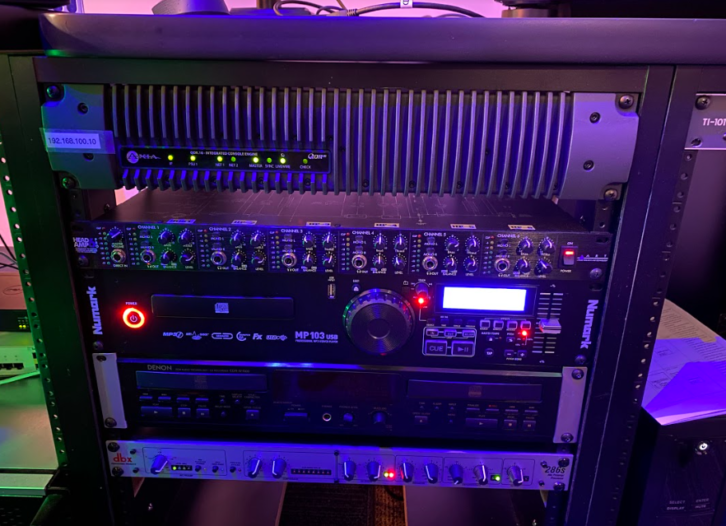
RW: Describe the station’s physical airchain path.
Ankney: The studio is on the main floor of the student union, and and the transmitter is on the lower level connected by Cat-5 cable-a run of about 40 meters. We use StereoTools as the last step in the signal chain before going to the stream. The transmitter is tied to the antenna with a monstrously long cable of almost 700 meters of buried cable. Many solutions including microwave relays were discussed and then tabled due to cost and complexity of the build.
[Check Out More of Radio World’s Facility Showcases]
RW: What was the project budget?
Ankney: The budget was around $20,000, and was generously provided by parents and alumni. We are still adding to our equipment list and hope to add a Tieline ViA remote broadcast system to our station so that we can broadcast high school sports and other remote events.
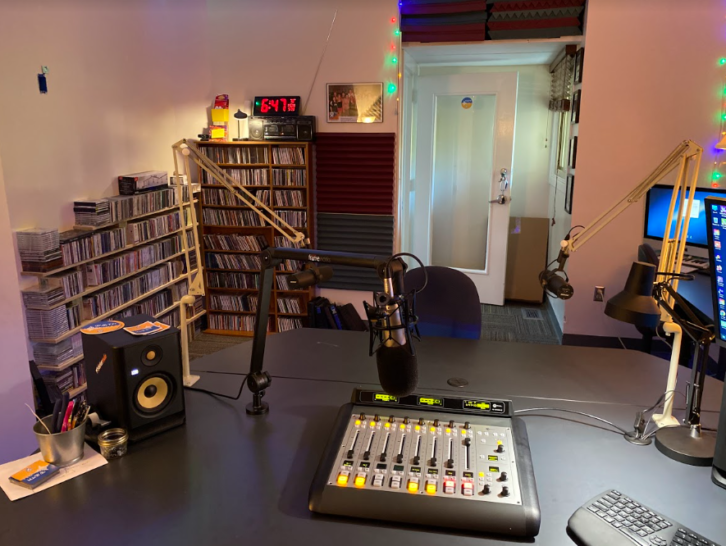
RW: If the project involves a central new piece of gear or system, describe it and talk about what makes it unique.
Ankney: For us the Axia iQ console has been a game-changer. The ease of setup and use is extraordinary and we are hoping to expand by adding a sidecar.
RW: Did you hire a master contractor and/or turnkey company? Who did the install and wiring?
Ankney: The redesign, install and wiring was completed by Matt Aaron, chief engineer for the Dave Ramsey Media. He was assisted by David Klimkowski.
RW: If you were telling a radio engineer about these upgrades, what interesting insider info would you tell them?
Ankney: The most exciting thing (for me) is introducing high school students to the joys of radio broadcasting and production. I have discovered that there are a wide variety of students drawn to the field, but they must be given opportunities to learn about the business with real-life experiences. Having a “real station” where they can learn about engineering, production, sales and the associated technologies has been invaluable.

